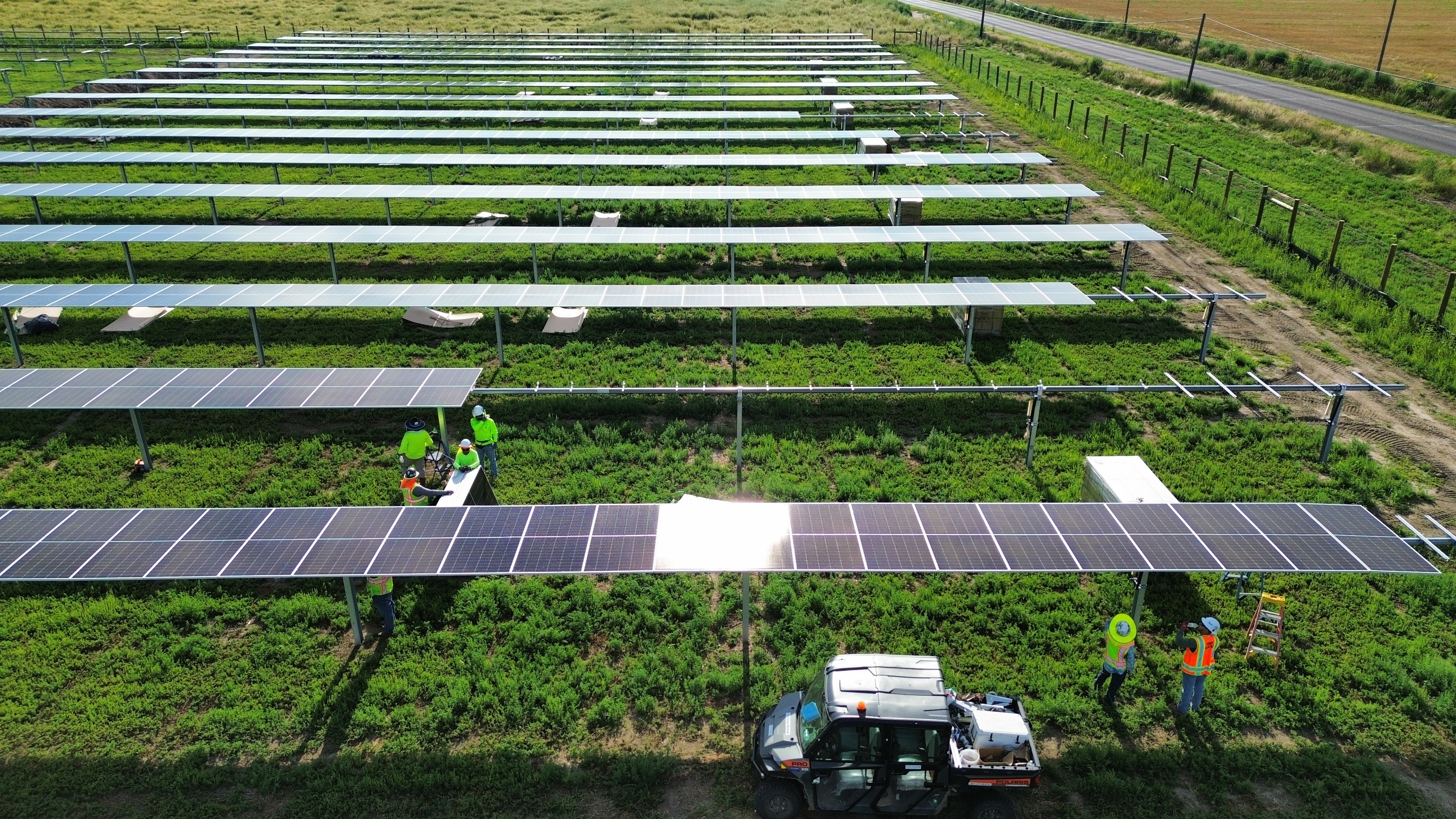Community solar is a segment within the solar energy industry that has grown rapidly in recent years. It started with just a few small projects in 2007 and has grown to produce 7.3 GW of power in 2023. This growth happened because of innovative ideas, new laws, and the creation of community solar programs that made solar energy more accessible to everyone.
Early Days: Utility Experiments in Shared Solar
Rooftop solar panels, which people install on their homes or businesses, were once seen as the main way to use solar energy, but are limited for two reasons:
- The majority of the population lives in homes unsuitable to mount systems onsite
- Solar investments have been seen as expensive and limited to the wealthy
In the early 2000s, people recognized that residential solar had its limitations, but finding a practical solution was difficult. Back then, the only way homeowners could benefit from solar energy was by using the electricity generated by their own solar panels to lower their electricity bills or by receiving credits for any extra energy they sent back to the grid through a system called "net metering."
Small co-op utilities and municipal utility companies began experimenting with shared solar projects to make solar energy available to more people. In 2007, the Sacramento Municipal Utility District in California launched the Solar Shares Program. This program allowed residents to pay a fixed monthly fee to receive energy credits on their electric bills, even if they didn’t have solar panels on their roofs. The 1 MW project was so popular that it sold out immediately, showing a demand for shared solar energy.
Over the years, municipal utilities and co-ops across the country kept experimenting with community solar projects. Most of these projects were small and served fewer than 100 people. Typically, the utility developed and owned the projects, requiring an upfront purchase of solar panels and participants receiving credits on their energy bills based on their share of the solar power. However, scaling these projects was challenging because early adopters had to build the framework from scratch. The high costs of consultants, lawyers, and accountants made these projects more expensive than regular utility power and hard to duplicate. For community solar to grow, a standardized structure and clear guidelines were needed. In other words, community solar needed a program to scale, and in 2010 the first program was legislated.
From Patchwork of Projects to a Patchwork of Programs
In 2010, Colorado passed the first community solar law called the Community Solar Garden's Act, which helped create a more standardized way for people to benefit from solar energy. This law led to the creation of the Solar*Rewards Community program, which allowed utilities to credit residents and businesses for the energy produced by solar farms, or shared solar projects. After Colorado’s success, other states began creating their own community solar programs. Here are some highlights from 3 of the major programs in community solar:
Minnesota
Minnesota’s largest utility, Xcel Energy, played a key role in launching the state's highly successful community solar program with the passage of the Community Solar Garden Legislation in 2013. This legislation introduced the first community solar program without a cap on the number of participants, leading to the largest community solar capacity in the country to date—about 800 MW currently in operation.
In most community solar markets, the value of the solar energy produced is tied to a portion of the retail cost of electricity, similar to the way rooftop solar systems are credited. However, Minnesota's program uses a unique approach called the Value of Solar (VOS) tariff. According to MNSEIA, “The idea behind the ‘Value of Solar’ is to develop a rate that is payable to solar facilities that is equivalent to the direct benefit that the solar facility is providing to the utility, its ratepayers and society generally.” The Public Utilities Commission reviews this tariff annually, with input from experts, stakeholders, and the utility. The VOS has historically offered attractive financial returns for subscribers, making Minnesota’s program the largest in the country, which invites backlash from critics.
Massachusetts
Massachusetts also passed community solar legislation in 2013 to expand solar energy access for homeowners and businesses. The state has introduced several incentive programs to support the growth of community solar, including SREC I and II, and the SMART Program. Massachusetts currently has over 1600 MW of community solar capacity in development.
One of Massachusetts' key contributions to the community solar industry is defining the modern capacity configuration with the "anchor tenant" model, which involves a large commercial subscriber (the anchor tenant) sharing a community solar farm with multiple smaller residential subscribers. Previous programs had vague requirements for “multiple subscribers,” allowing developers to focus almost exclusively on commercial customers since they were easier to manage than hundreds of individuals. The SREC II program changed this by requiring that no single tenant could control more than 50% of a garden's capacity, with the remaining 50% allocated to smaller subscribers (25 kW or less). This model made it easier to finance projects while opening up participation to hundreds of households or small businesses.
New York
Although Minnesota leads in operating community solar capacity and Massachusetts has the largest number of projects in development, New York holds the greatest potential for future growth. In 2019, New York set an ambitious goal to achieve 6 GW of total solar capacity by 2025.
New York has taken a unique approach to crediting community solar subscribers. The state uses a system called the Value of Distributed Energy Resources (VDER), which calculates compensation in real-time based on the impact that a solar project has on the local grid and environment. VDER is more complex than traditional crediting methods, making it difficult to predict the rate that a community solar project should charge subscribers. To address this uncertainty, New York adopted the fixed discount subscription model pioneered in Massachusetts. Under this model, residential subscribers receive a discount on their energy bill, regardless of fluctuations in the VDER value, ensuring they always see savings.
Summary: Community Solar is Evolving with a Common Goal
Today, 24 states have laws that support community solar, and 11 of those states have programs with active or developing projects. Each new community solar program has learned from previous ones, making solar energy more accessible to everyone. The goal remains the same: to increase participation and make clean solar energy available to everyone, regardless of where they live.


.jpeg)
